Traditional Japanese Instruments: Best Five Ones!
James Lau
Posted on May 21, 2024
Share:

There are five instruments in traditional Japanese music that you should know about! Each has a rich history and cultural significance, embodying the craftsmanship and artistic expression defining Japan’s musical heritage. Whether you’re a music enthusiast or a cultural explorer, join us as we dive into the enchanting world of traditional Japanese music!
Shakuhachi
The shakuhachi is a traditional Japanese bamboo flute, first created in the 8th century and originating from the Chinese xiao instrument. Its design also includes an angled-cut end with a piece of ivory or bone for different sounds and a bell made from a bamboo trunk. With four finger holes and a thumbhole, it’s generally used for solo and chamber music. Additionally, the name comes from its length: one shaku and eight or hachi sun, around 55 centimeters.
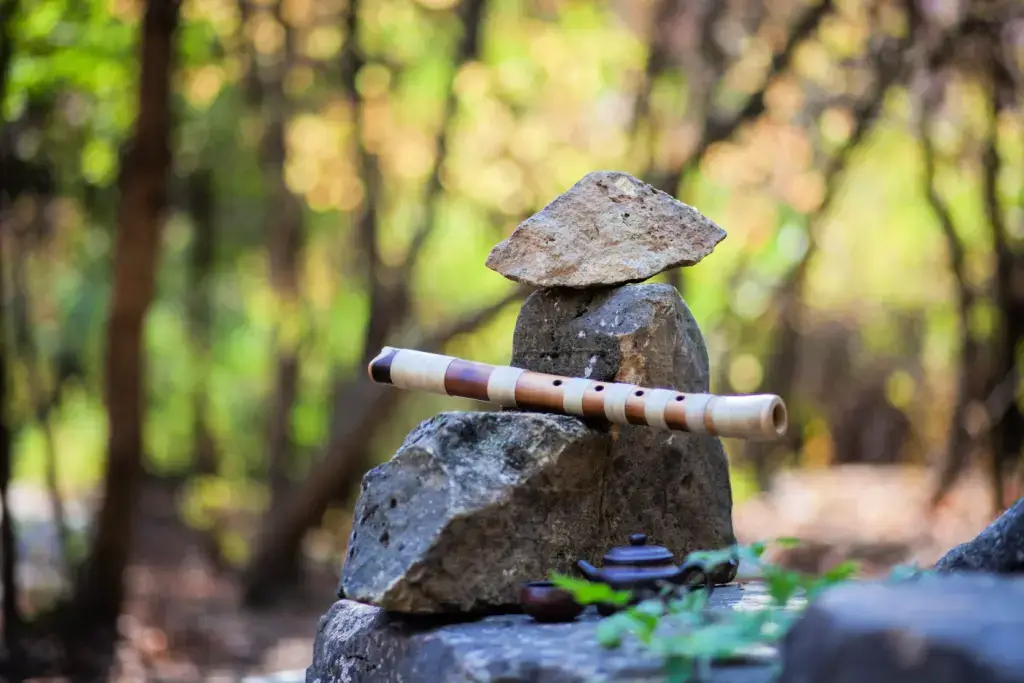
Wandering Buddhist priests used the shakuhachi during the Edo period, but it gained popularity in modern times with the development of the fuke shakuhachi. Traditionally, players used it for spiritual solos, but now they play it in ensembles alongside instruments like the koto and shamisen. Manufacturers now produce it in different lengths, which creates varied pitches and a wide range of tones.
Biwa
The biwa, a Japanese short-necked lute based on the Chinese pipa, arrived in Japan around the late 7th century. It also comes in various types, including the gagaku biwa for imperial court music, mōsō biwa for storytelling by blind monks, Heike biwa for Tales of Heike, and Satsuma biwa for modern tales. Moreover, traditional biwa often has four or five strings, and some ancient relics showcase a straight-necked, five-string design.
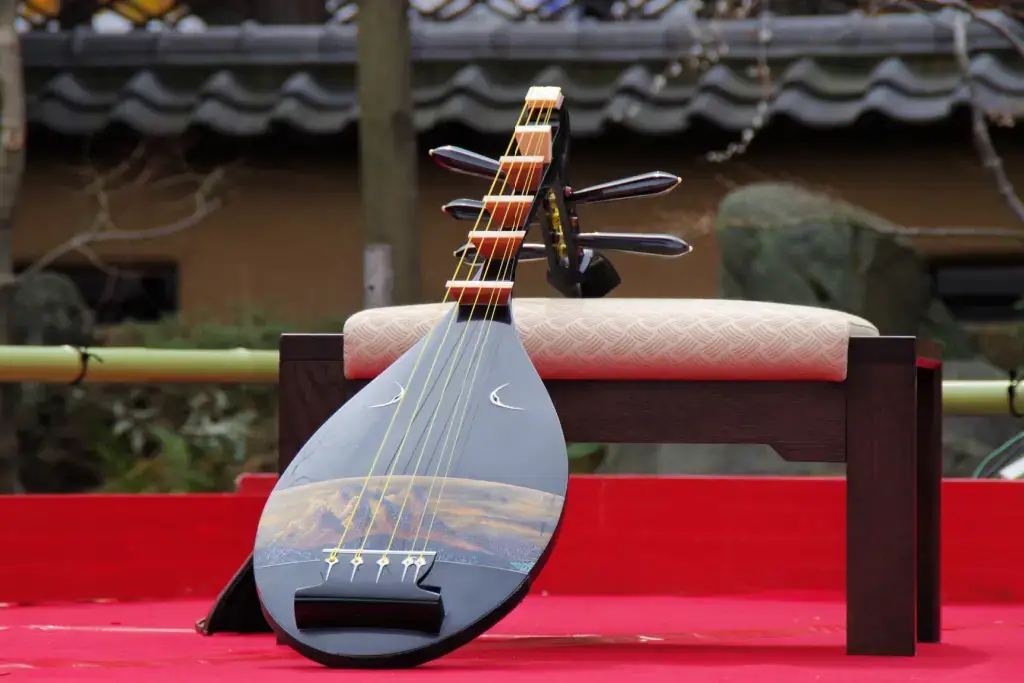
The biwa’s distinctive features also include its pear-shaped body, shallow, rounded back, and silk strings. It is generally played with a large wedge-shaped pick called a bachi. While often accompanying narratives or in gagaku ensembles, the biwa can also be a solo instrument, depicting events like battles or storms through its music. Each variant of the biwa undoubtedly caters to specific purposes and traditions in Japanese culture.
Sanshin
Sanshin is a traditional musical instrument from Okinawa. Made of a neck, body, and pegs for strings, the sanshin comes in different types based on neck shape, with seven typical variations named after craftsmen from the Ryukyu Dynasty. Historically, having a sanshin with a snakeskin body symbolized wealth in Okinawa, and the instrument holds special cultural significance, generally displayed for good luck.
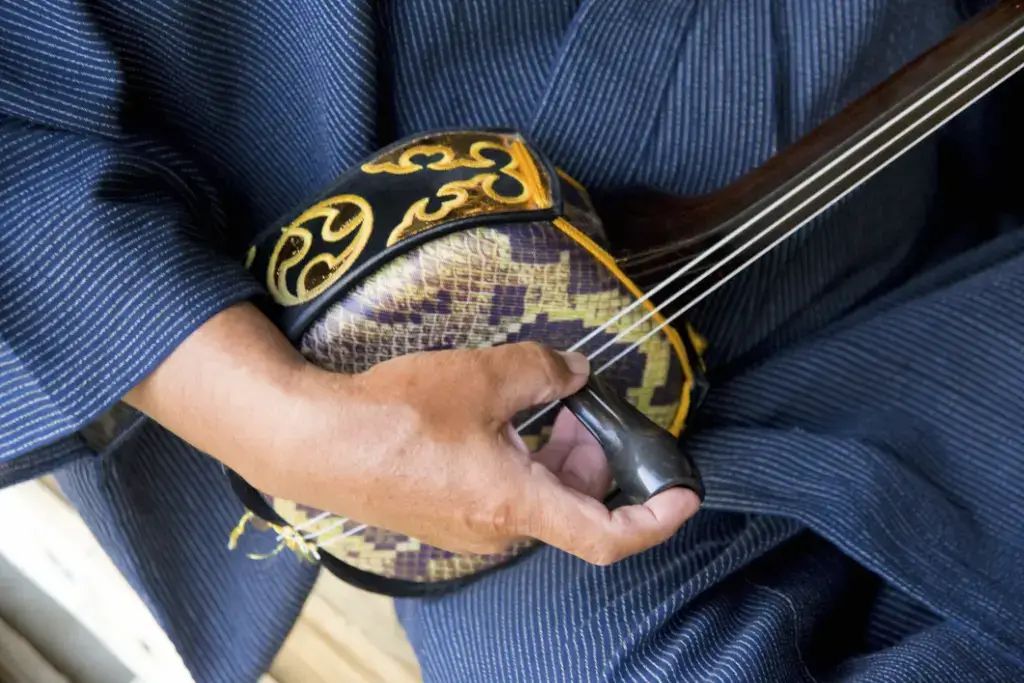
Originating from China as the sanxian in the late 14th century, the sanshin gained popularity in the Ryukyu Dynasty by the 15th century. Eventually, it became an official instrument for court music in the 17th century. In the 1950s, efforts to protect and preserve the sanshin began, recognizing its importance as a part of Okinawan culture. Today, people cherish sanshin as a cultural heritage in Okinawa.
Are you looking for snacks while listening to traditional Japanese music? Check out Sakuraco! Sakuraco delivers traditional Japanese snacks, teas, sweets, and snacks from local Japanese makers directly to your door so you can enjoy the latest treats from Japan!
Taiko
Taiko drums are barrel-shaped instruments played with wooden sticks known as bachi. They come in various types, including the large O-daiko used in festivals and temples, the shime-daiko with a softer tone for Noh and Kabuki theater, and the gaku-daiko, hung in frames for court music. Generally, taiko drums have been a part of Japanese culture for over 2,000 years. As a result, they played significant roles in court music and traditional art forms.
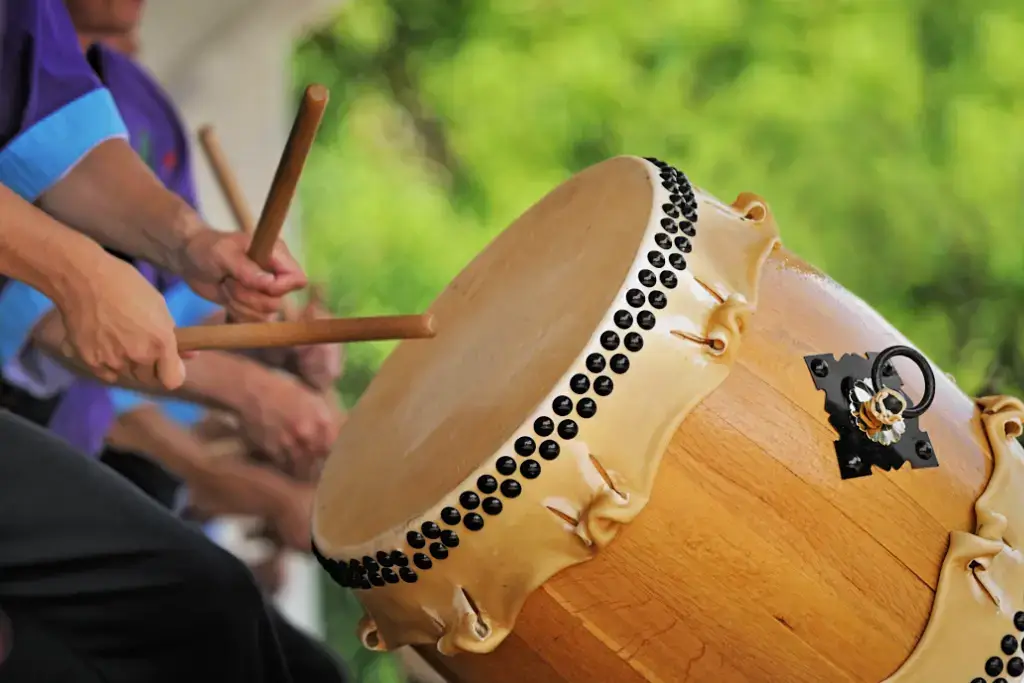
In the 20th century, taiko experienced a revival with the formation of Kumi-daiko groups in the 1950s. Pioneers such as Daihachi Oguchi and groups like Osuwa Daiko revolutionized taiko music, spreading its popularity globally. Overseas, Japanese immigrants initially preserved taiko traditions, and later generations spread the art form. Today, taiko thrives worldwide, with groups promoting their love for the instrument.
Koto
The koto, a traditional Japanese zither, is one of Japan’s most beloved musical instruments. It typically features 13 strings and movable bridges called kotoji. Usually, players pluck the strings with small picks attached to their fingers, creating beautiful melodies. Over time, various styles and traditions of koto playing have emerged. The koto is often played alongside instruments like the shamisen and shakuhachi.
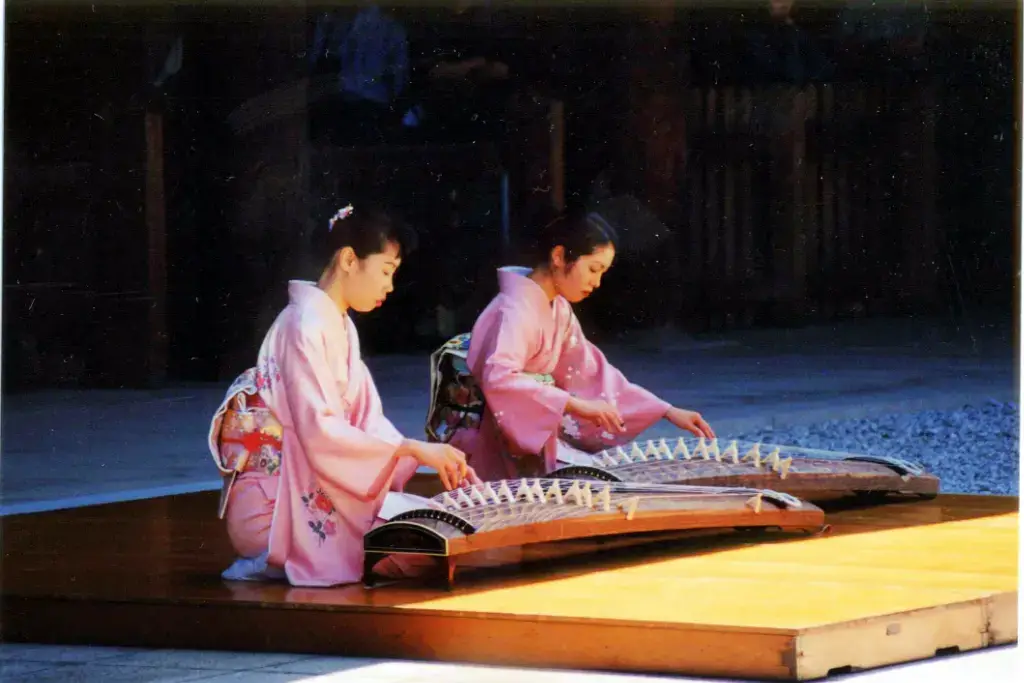
Constructed from paulownia wood, the koto measures about 190 cm and sits on legs or a stand during performance. Therefore, its sound makes it suitable for various musical genres. Notable composers have incorporated the koto into orchestral works, showcasing its adaptability. As a symbol of Japanese music, the koto holds a special place in traditional and contemporary music, connecting generations through its timeless melodies.
With traditional Japanese instruments like the shakuhachi and biwa, Japan’s culture comes alive, connecting its past and present. Whether you like the soothing sounds of ancient flutes or the dynamic drums, these instruments continue to captivate audiences worldwide. Explore the beauty of Japanese music, and let it transport you to a world of tradition, innovation, and timeless beauty! Have you ever heard of these instruments? How about playing one of them? Let us know in the comments below!

Discover authentic flavors with Sakuraco
Get Sakuraco 

Discover authentic flavors with Sakuraco
Get Sakuraco 
Related Articles

Steam Train in Shizuoka: Riding the Oigawa Railway
For travelers who love history, beautiful views, and cozy retro vibes, this steam train is one of Shizuoka’s most charming treasures, with some of the best views. If you want to know more about this train, keep reading below!

Nara Japan: The Amazing Legend of the Sacred Dragon
In Japanese culture, dragons are spiritual beings that represent strength, prosperity, and a harmonious balance with the natural forces. Nara, Japan, has a unique story associated with sacred ponds and revered shrines throughout the region.

Nambu Tekki: Morioka’s Amazing Iron Craft
In the historic city of Morioka, Iwate Prefecture, a craft with over 400 years of history continues to captivate with its rustic beauty and practical charm. Nambu tekki, or Nambu cast iron, refers to traditional ironware, such as teapots, kettles, and decorative pieces, that embody the spirit of Tohoku craftsmanship.

Ebisu: The Cheerful Guardian of Luck and Prosperity
Religion in Japan involves a dizzying array of spirits and beings. These gods are inspired by ancient tales and used to symbolize nature’s bounty. However, they also profoundly impact daily life and are often sought out for help in challenging times



